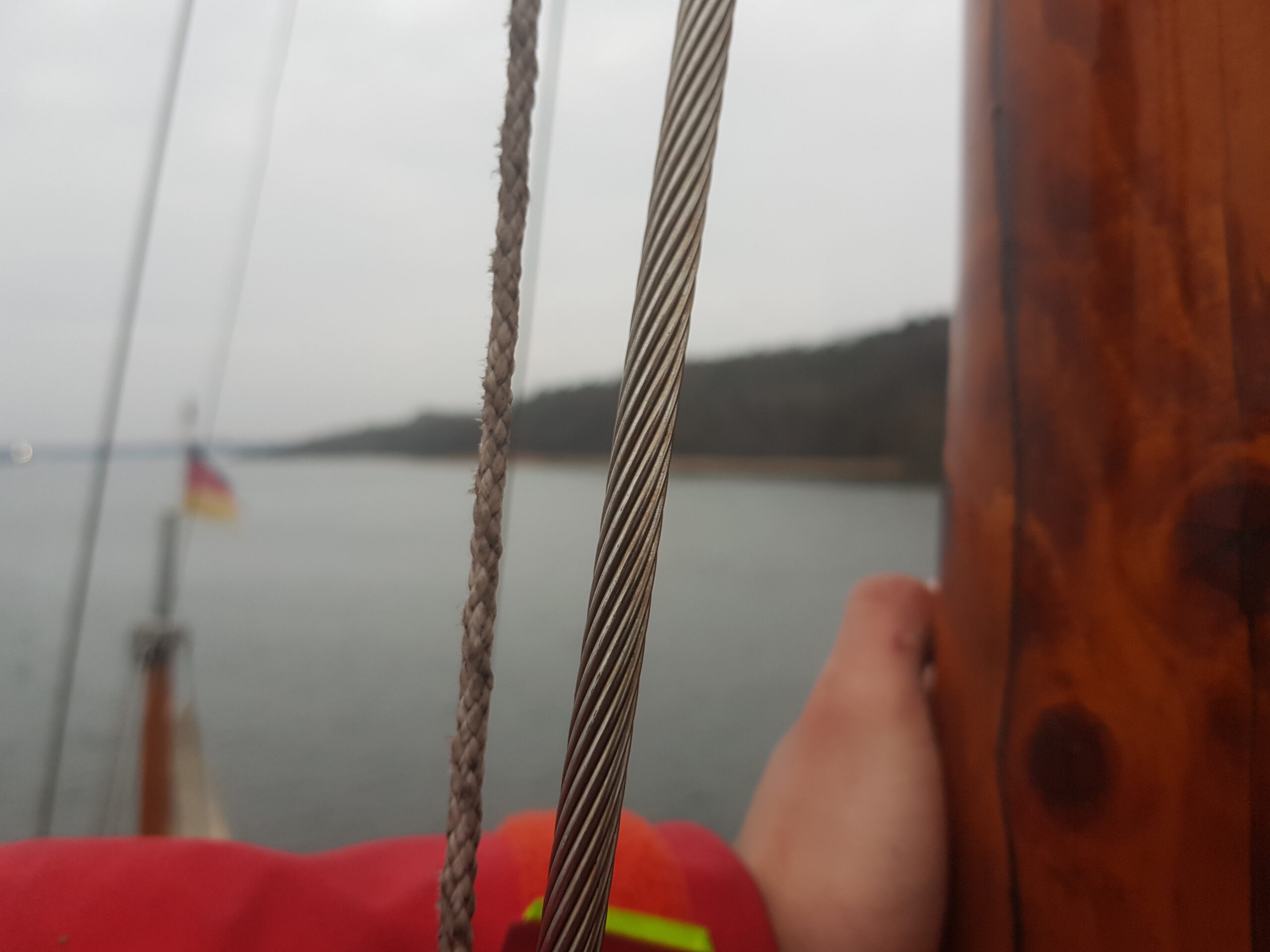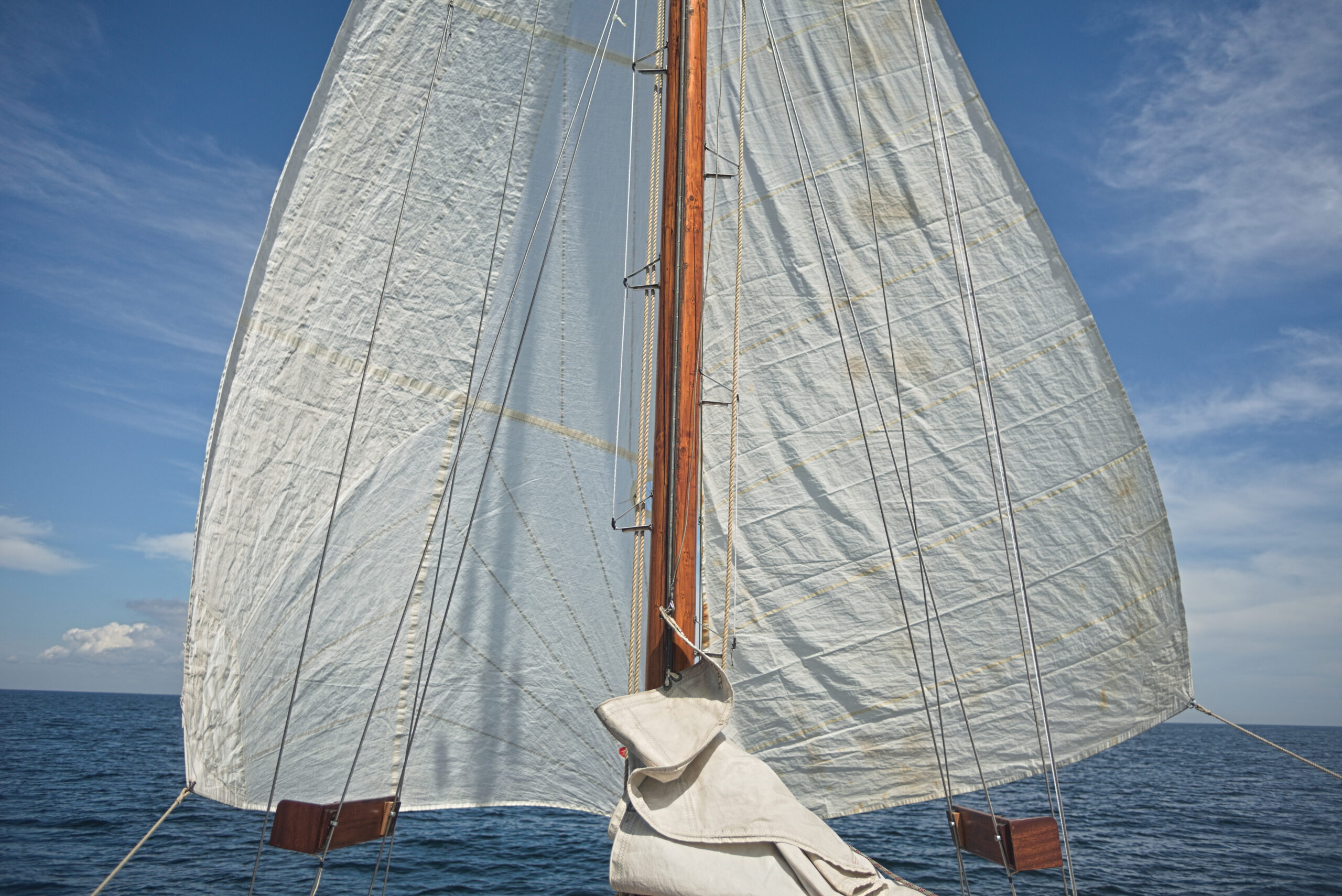The adventure of sailing around the world is coming closer and the final preparations are underway. Before heading out on the open seas this summer, we take a look at the exciting plans and necessary equipment that still need to be put in place. From technical upgrades to essential work on board, here are the final milestones that await us as we prepare for this long-planned voyage. Join me for these final milestones and immerse yourself in the anticipation of the great sailing adventure.
Rig

Equipment:
- Main mast, including fittings
- Mizzen mast, including fittings
- bowsprit, including fittings
- Main boom, including fittings
- Mizzen boom, including fittings
- Standing rigging:
Main mast: 3 fore stays, bowsprit stay, connecting stay, 2 back stays (incl. insulated stay length for MF/HF antenna), 6 shrouds;
Mizzen mast: 8 shrouds - Running rigging (three-string spleitex):
Main mast: 5 halyards (incl. working halyard), boomirk
Mizzen mast: 2 halyards (incl. working halyard), boomirk, extended connecting stay - Wind generator
- X-band radar
- 2 deck spotlights
- Anchor light, tricolor lantern, side lights and top light
- VHF antenna
- Mast steps
- 3 manual winches on the main mast
- Various cleat, blocks and shackles
- Sails (Tuchwerkstatt Greifswald, 2024):
light wind jib, 25m², Fastnet cloth, 308g
working jib, 18m², Hydranet cloth, 380g
high wind jib, 14m², Hydranet cloth, 350g
storm jib (small stay), 9m², Fastnet cloth, 390g
Mainsail (two reefs), 17.50m², Hydranet cloth, 380g
Mizzen sail, 6.6m², Hydranet cloth, 380g - Sheets (three-string spleitex)
- Sheet winches in the cockpit (2x self-hauling Andersen two-gear winches, 2x small one-gear winches)
- 2 spinak booms
Upcoming work:
- Building and preserving the main mast
- Building and preserving the mizzen mast
- Building and preserving the main boom
- Making shrouds
- Replace lamp box
- Design and install wind generator fitting
- Design and install radar fitting
- Lay cables in the mast
- Rig mast
Engine
Equipment:
- Perkins 4.108M, four-cylinder 50hp with dual-circuit cooling and Hürth gearbox
- Starter battery, lead acid 70Ah
- Oil temperature, pressure, cooling water temperature and rpm indicators
- Alternator and B2B charger
Spare parts: - 10 diesel oil and 10 oil filters
- Impeller
- starter motor
- Fuel pump
- Cooling water pump
- Complete gasket set
- Fuel lines
- Fuel injectors
Upcoming works:
- Mill engine block and cylinder head flat
- Pressure testing the cylinder head
- Fitting the cylinder head
- Replacing various gaskets
- Overhauling the fuel lines
- Changing the alternator
- Changing the filters
- Adjusting injection nozzles
- Painting the engine
- Overhauling the starter motor

Navigation
Equipment:
- Various magnet compasses
- Sextant, Almanac and Selected Stars
- MFD Raymarine Axiom 7
- Quantum radar
- AIS Transponder
- Passive radar reflector
- VHF with DSC and secondary telephone, Raymarine
- VHF without DSC, SAILOR
- MF/HF receiver, SAILOR
- NAVTEX receiver
- Impellerlog
- Echosounder with alarm function
- Adaptive pilot, Raymarine
- Wind steering vane, Aries
- Binocular, Steiner
- Ipad as remote display of MFD and for route planning
- Electronic charts, Navionics
- Paper charts, var. planning charts, Admiralty
- stationary equipment
- calculator
upcoming works:
- Install NAVTEX antenna
- Update VHF, connect secondary VHF
- Repair log
- Install radar
Safety
Equipment:
- Life raft
- EPIRB
- Handheld VHF
- pyrotechnical rescue appliances
- medical equipment
- Rainwater collecting device
- fishing tackle
- day light signalling mirror
- Bilge pump (manual/electrical)
- Sea anchor
- Satellite communication device, incl. various GNSS
- CO2-fire extinguisher
- ABC powder fire extinguisher
- ABF foam fire extinguisher
- Carbonmonoxid warning device
- Gas warning device
- Smoke detector
- life west
- safety harness
- Catch and Lift rescue system
upcoming works:
- Buy equipment, check batteries, programm radio technical rescue appliances
- Buy spare parts
Living on board
Equipment:
- Library
- Upholstery
- Gas cooker, oven and stove
- Fridge
- sound system
Upcoming works:
- Buy a new gas cooker
- Renew upholstery
Electric
Equipment:
- 7,2kWh LiFePo4 consumer battery with BMS
- Starter battery
- B2B charger
- Mastervolt 60A charger
- Wind generator incl. charge controller
- 2 PV systems incl. 2 charge controllers
- Inverter 2000W
- Systems: 5V, 12V, 230V
- Tinned cable, 2,5mm^2, high amperage cable: 50mm^2
Upcoming works:
- Install wind generator
- Renew mast cables
Outlook
Full of energy, I can hardly wait to explore the world’s oceans. But before we set sail, there are still a few important stages to complete. You can be part of this journey, whether by actively supporting us in the shipyard or from home. Every contribution, big or small, brings us closer to fulfilling this dream. If you would also like to be part of this adventure, I warmly invite you to get involved. Together we will set sail for a sustainable and unforgettable journey!

















